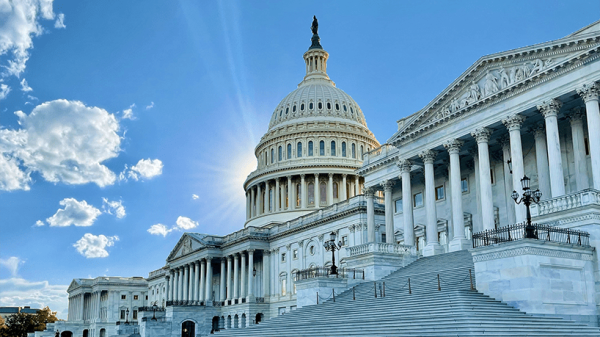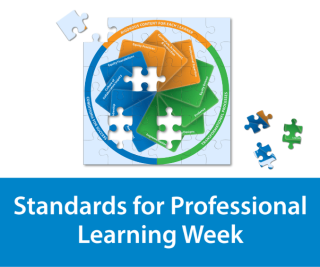Study of Colorado, Missouri, New Jersey, and Vermont Identifies Proven Strategies for Other States To Consider
DALLAS – January 20, 2011 – To support effective teaching and improved student performance, state education leaders can learn from four states that have significantly improved professional development and student learning.
A new study, conducted by Learning Forward and the Stanford Center for Opportunity Policy in Education, reveals that various combinations of the four states (Colorado, Missouri, New Jersey, and Vermont) share strategies to promote quality professional learning. The study, part of a multiyear research project supported by a grant from The Bill & Melinda Gates Foundation, identified five powerful elements which emerged from the different states’ initiatives:
- A common and clearly articulated vision that permeates policy and practice;
- Monitoring of professional development quality;
- Mentoring and induction programs that create a foundation for ongoing professional learning;
- An infrastructure of organizations that facilitates effective professional development; and
- Stability of resources for professional development.
The new study, Teacher Professional Learning in the United States: State Policies and Strategies, underscores the importance of continuous professional development to improve teacher quality, and identifies policies and practices that have created “pockets of promising practice.”
“State education policy can be a potent lever for ensuring quality professional development improves student learning,” says Stephanie Hirsh, executive director of Learning Forward. “These four states created a vision for professional development through their creative use of standards to guide licensing and school planning. To implement this vision, they developed an infrastructure of intermediary organizations, universities, and professional organizations that strengthen state and local capacity. This report provides useful lessons for how states can foster innovative learning opportunities for both students and teachers.”
“Policymakers need to be able to make more informed decisions about professional development, so that scarce resources can be effective in supporting teacher learning and student achievement,” says Linda Darling-Hammond, Charles E. Ducommun Professor of Education at Stanford University, the principal investigator of the study. “This report can provide valuable insights to state and local education leaders and policymakers about how to invest effectively in teacher learning.”
Detailed Findings
The four states took varying approaches to how they monitor and promote professional development, and provide varying levels of support and control at the state level. But the study revealed strong patterns of ways that states can successfully promote access to quality professional development:
Developing standards to guide accountability. State education agencies that develop professional development standards to guide licensing and professional development provide strategic guidance and oversight. That guidance and oversight can be supplemented by district and school committees that oversee professional development at the local level. This is the case in New Jersey, where school- and district-level committees are required to create local professional development plans, which are reviewed by a county panel.
Monitoring quality. States can determine the usefulness and effectiveness of professional development by using surveys and studies to assess educators’ participation in and the quality of professional development.
Requiring induction and mentoring programs. In three of the four states, induction programs for beginning teachers are required before teachers can receive a professional license.
Leveraging collegial strategies for professional learning.Policy can leverage staff collaboration as a strategy, often through the form of professional learning communities (PLCs) or other collaborative teams that focus on professional development and school improvement initiatives. These approaches represent a promising shift from the traditional “sit and get” model of staff development.
Partnering with professional organizations. Partnering with universities and professional organizations can create an infrastructure to support professional development that surpasses the reach and influence of the state agency, particularly when focusing on specific subject-area initiatives. Colorado’s state education department, for example, created a Colorado Math Intervention Team, comprised of a number of professional organizations, including an organization of math teachers and another focused on learning disabilities.
Creating networks of intermediary organizations. Along with providing coordination, coaching, and other supports to schools and districts in a way state departments cannot, these organizations often act as a “sense-making filter” that links state goals with local needs. Missouri’s regional professional development centers (RPDCs), Vermont’s Math Initiative, and New Jersey’s PLC Lab Schools projects are examples of such organizations.
Addressing federal mandates and accountability requirements in constructive ways. While federal policies such as No Child Left Behind have provided significant resources for instructional improvement in high-need schools, states must use policy to support collegial learning without restricting its focus to narrow types of instructional improvement defined only by basic skills test scores. The turnaround initiatives required of low-performing schools offer one example of how states can address federal mandates in ways that support effective professional development. In Vermont, for example, struggling schools in their third year of corrective measures are required to create PLCs and spend 10 percent of their funds on professional development.
Skillfully marshaling resources. Despite budget cuts, all four states examined in the report have made important long-term resource commitments to teacher professional learning. For example, Missouri requires districts to allocate 1 percent of state funding to local professional development efforts. An additional 1 percent of the state’s overall budget is dedicated to statewide professional development, which helps support its network of 11 RPDCs. While state funding for the centers was suspended in 2010, nine of the 11 centers have found alternative funding sources.







